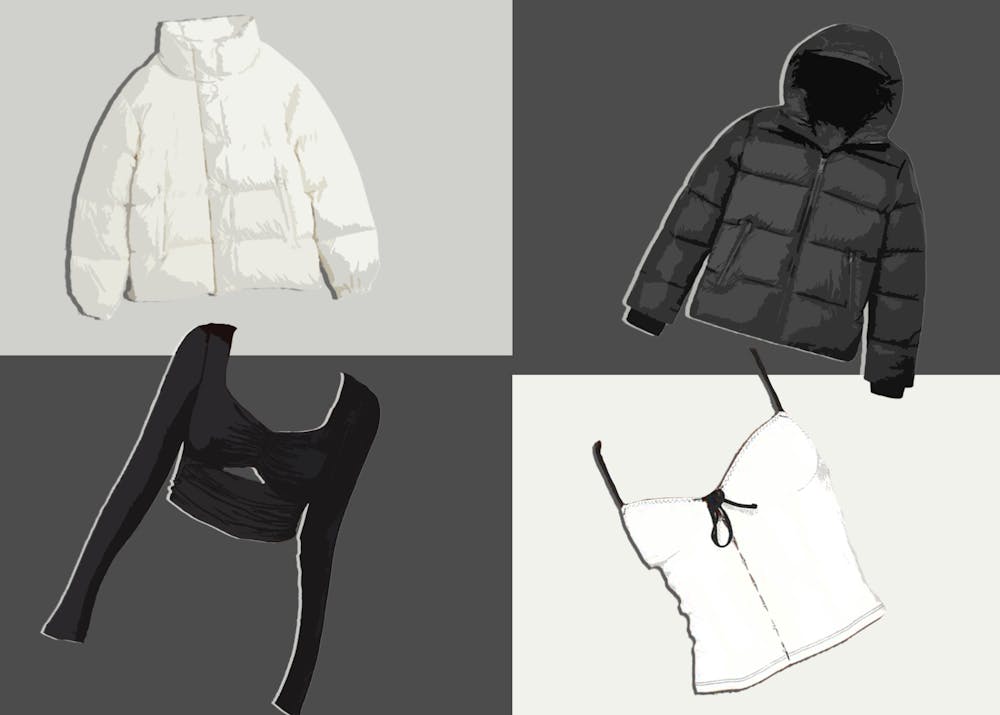In fast-paced college lifestyles — where trends dictate conversation, friendships and confidence — it is easy to fall under the tempting influence of fast fashion. Characterized by the rapid mass production of on-trend clothing, fast fashion is inexpensive but wasteful. Economists are now promoting a “circular” method of shopping in which people rent and recycle clothing. However, University students have shown mixed feelings about the new method, suggesting that finding a permanent alternative to fast fashion will not be easy.
Many students point to price as a determining factor in their fashion choices. Graduate Arts & Sciences student Jason Jang expressed reservations about shopping for high-priced clothing.
“I think the biggest barrier [is] price,” Jang said. “Beautiful clothes [are] really expensive … Price is the biggest enemy for me.”
Budget-conscious students like Jang thus seek ways around this obstacle — and fast fashion provides a convenient solution. From cheap party shirts to one-time Halloween costumes, brands such as Shein, Fashion Nova and Brandy Melville offer inexpensive outfits for almost any social event. Other front-runners in fast fashion include HOKA shoes, which picked up steam over the summer, and puffer vests, which are now overtaking the University’s winter season apparel.
Although fast fashion alleviates budget concerns, it promotes the idea of a “throwaway culture” — wherein people contribute to a wasteful cycle of buying and repurchasing. Enticed by intentionally low prices, consumers buy cheap garments only to treat them as disposable commodities, abandoning the items once new trends render them outdated.
Statistics show that the average consumer bought 60 percent more clothing garments in 2014 than in 2000 yet kept each item for half as long. Fast fashion ultimately promotes quantity over quality of clothes, undermining the very value of fashion.
While avid buyers of fast fashion, students have acknowledged the pitfalls of this shopping method. Second-year College student Ashley Nguyen observed how fast fashion relies on trends. For her, fast fashion reinforces the idea that people must tailor their outfits to keep up with fleeting styles.
“I definitely felt a pressure to fit in,” Nguyen said. “Everyone wants [clothing] because it's a trend. And it's like, why are we just doing this? Because it's trendy?”
A circular approach to the fashion ecosystem offers a promising alternative to fast fashion. Emphasizing the repurposing of clothing, circular fashion encourages consumers to embrace thrifting, second-hand consignment stores and do-it-yourself projects to breathe new life into old garments. Introduced in 2014, the method gained traction during the COVID-19 pandemic when clothing production halted, forcing people to reuse the apparel they had at home. Now circular fashion remains a viable approach in the clothing industry.
After trying out circular fashion, students have noticed not only practicality but also joy in sharing items with others. Jang described circular shopping as a positive experience for him, pointing out the opportunity to try different clothing styles.
“When I was living in Korea, I used to get clothes from my friends and give [away] my clothes,” Jang said. “It [was] kind of funny because everyone has their own preference.”
Still, some students remain skeptical of a possible transition to a circular clothing economy. According to Nguyen, fast fashion is too deeply rooted in shopping culture to leave.
“I think [circular fashion] … is good for the economy [and] good for the environment,” Nguyen said. “But I don't think anytime in the near future we're going to get rid of fast fashion.”
Second-year College student Taylor Krafchick also emphasized the impracticality of a circular clothing economy. She pointed out the vulnerability of continuous repurposing, specifically the reliance on finding second-hand clothing articles in good condition.
“I think if clothes are just being passed from person to person, at a certain point it's going to wear out, and then I’ll need something else. You're always going to need to be pumping [out] clothes anyway,” Krafchick said.
Circular fashion offers an inexpensive and sustainable alternative to fast fashion — yet, it does not seem like fast fashion will disappear from Grounds anytime soon. University students remain swayed by the appeals of fast fashion — namely, the ability to keep pace with trends, which circular fashion does not always allow. According to Nguyen, fast fashion keeps up with current styles, remaining an ideal shopping choice for students.
“Things go out of style, and now they're back,” Nguyen said. “It just shows the influence of trends in society, especially in college.”







